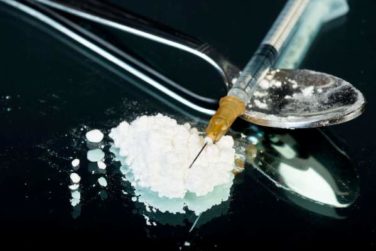FROM THE NEW ENGLAND JOURNAL OF MEDICINE
A 6-month course of oral propranolol induced complete or nearly complete resolution of proliferating infantile hemangioma in 60% of treated babies participating an international clinical trial, according to a study published online Feb. 19 in the New England Journal of Medicine.
A pediatric oral formulation of propranolol, a nonselective beta adrenergic receptor–blocker, was recently introduced and rapidly came to be considered first-line therapy for infantile hemangiomas, even though no large randomized controlled trials have assessed the drug in this patient population. Researchers now report findings from an industry-sponsored randomized, placebo-controlled, double-blind phase II/III trial involving 460 infants aged 35-150 days treated during a 1.5-year period at 56 medical centers in 16 countries.
In the first, dose-finding stage of the trial, patients were randomly assigned in roughly equivalent numbers to receive one of four doses of propranolol or a matching placebo for 3 or 6 months. An interim analysis determined that 6 months of the 3 mg/kg-per-day dose had the best benefit-to-risk ratio, so in the second stage of the study the babies were randomly reassigned to either that dose or a matching placebo for a total of 24 weeks. All were then followed for 72 more weeks to assess the permanence of the treatment effect and adverse events, said Dr. Christine Léauté-Labrèze of the pediatric dermatology unit, Hôspital Pellegrin-Enfants, Bordeaux, France, and her associates.
The primary efficacy endpoint – complete or nearly complete resolution of the target hemangioma at week 24 – occurred in 60% of the 101 patients treated with the selected propranolol regimen, compared with 4% of the 55 patients assigned to placebo. Marked improvement in the lesion was noted by week 5 in 88% of the first group, compared with 5% of the placebo group. Overall, propranolol produced a significantly greater reduction in hemangioma surface area and color intensity than did placebo (N. Engl. J. Med. 2015 Feb. 19 [doi:10.1056/NEJM0a1404710]).
Six patients (10%) who received 3 mg/kg per day of propranolol required a second systemic hemangioma treatment during follow-up. This rate is comparable to the relapse rate reported in the literature, Dr. Léauté-Labrèze and her associates said.
The incidence of adverse events was higher with propranolol than with placebo, but that of serious adverse events was comparable between the two groups. Diarrhea and bronchial hyperreactivity, two adverse events known to be associated with propranolol, were more common with active treatment than with placebo but were mild or moderate in severity. Bronchospasm, bradycardia, hypotension, and hypoglycemia were infrequent but occurred more often in the propranolol groups than in the placebo group, the researchers said. “Only one patient who received propranolol had a serious adverse event (bradycardia in the context of enterocolitis). Heart-rate decreases typically occurred within 1 hour after dose administration.”
Dr. Léauté-Labrèze disclosed ties with Pierre Fabre Dermatologie, which sponsored the study. Some of her associates reported ties to Pierre Fabre, Amgen, Centocor, Shire, Infectopharm, Pfizer, AbbVie, and Galderma.




